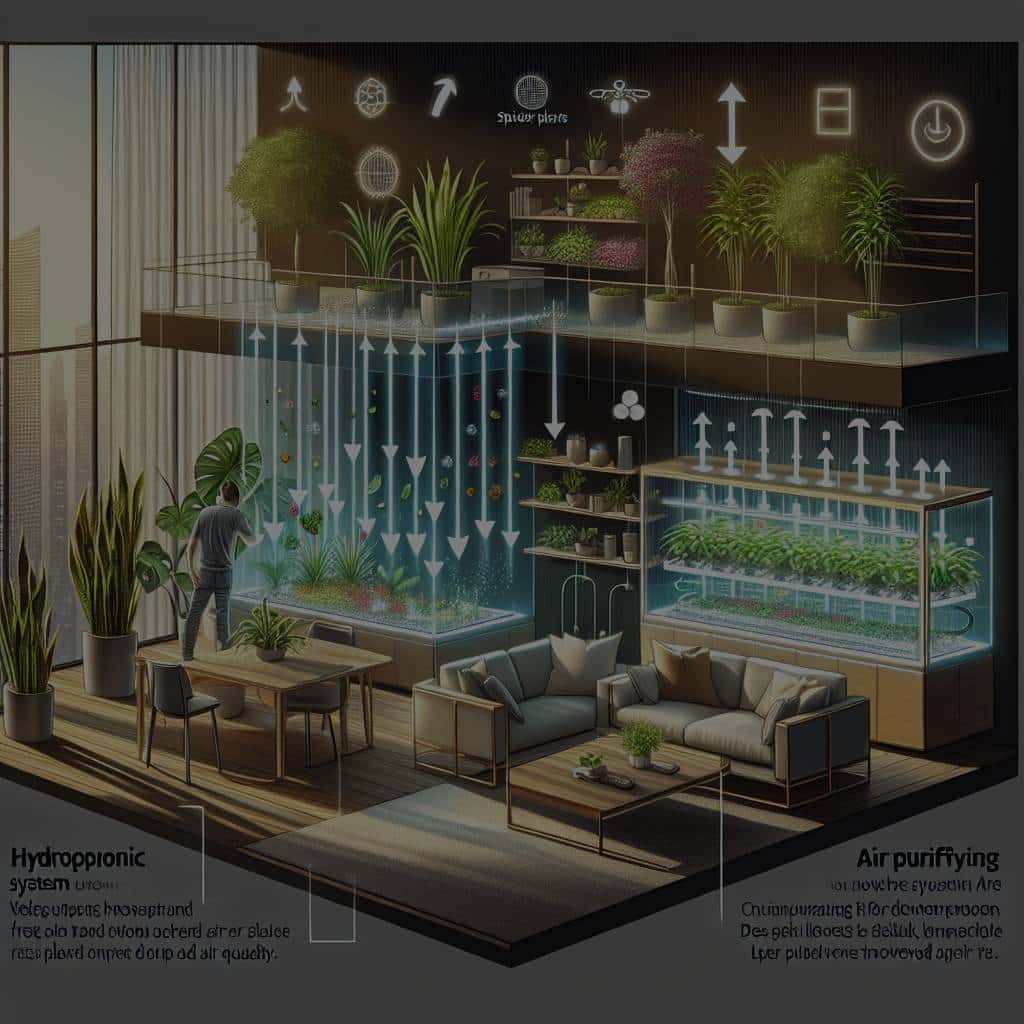As our modern cities continue to expand and evolve, the integration of unconventional agricultural practices into our daily lives has become not only feasible but also highly beneficial. One such practice is hydroponics, a method of growing plants without the use of soil. Given its adaptability, hydroponics provides a viable and efficient solution to the growing problem of food production in densely populated urban areas. But its benefits extend beyond food production. Hydroponics can greatly improve the air quality in urban environments. Let’s delve deeper into the world of hydroponics and its effects on air quality.
Hydroponic Systems: An Introduction
Before we discuss the environmental benefits, it’s essential to understand what hydroponic systems are and how they work. Hydroponics is a subset of hydroculture, a method of growing plants without soil, using mineral nutrient solutions in a water solvent. The roots of plants grown hydroponically are immersed in nutrient-rich solutions or are supported by an inert medium such as perlite or gravel. The cultivation of plants in a controlled environment eliminates the need for conventional farming methods, making hydroponics an ideal solution for urban agriculture.
Also read : What Are the Best Mindfulness Practices for Reducing Symptoms of PTSD in Veterans?
The absence of soil in hydroponic systems means there is no need for traditional farming equipment, which often contributes to air pollution through the emission of greenhouse gases. Hydroponic systems fit anywhere, from backyards to rooftops, to indoor vertical farms, and even abandoned urban structures. This adaptability makes it a perfect fit for urban living spaces.
Hydroponic Systems and Air Quality
The integration of hydroponic systems in urban living spaces has a direct impact on the quality of air. Indoor plants are known to improve air quality by absorbing carbon dioxide and releasing oxygen. By growing plants hydroponically within our living and working spaces, we’re essentially creating mini personal air purifiers.
Have you seen this : What Are the Implications of Artificial Intelligence in Personalizing Mental Health Interventions?
Hydroponically grown plants can also absorb and break down harmful VOCs (Volatile Organic Compounds). These compounds can emanate from household items such as paint, carpet, and cleaning products. NASA’s Clean Air Study has found that certain indoor plants can neutralize harmful pollutants like benzene, formaldehyde, and trichloroethylene. Incorporating hydroponic systems into urban living spaces allows us to reap these benefits on a larger scale.
Energy Efficiency of Hydroponic Systems
Hydroponic systems are not just beneficial for air quality. They are also highly energy-efficient, especially when compared to traditional farming methods. In traditional agriculture, a significant amount of energy is expended in plowing, planting, and harvesting crops. Hydroponic systems eliminate these processes, and therefore, the energy requirement is significantly reduced.
Moreover, hydroponic systems often utilize LED lights for plant growth which are more energy-efficient compared to traditional farming methods that rely on sunlight. The control that hydroponic systems provide over the growing environment also means that plants can be grown year-round, irrespective of the external weather conditions. This constant production can lead to more efficient use of energy over time.
Hydroponic Systems and Water Conservation
Water conservation is another crucial aspect of urban farming. Hydroponic systems, by their very nature, are exceptionally adept at conserving water. In traditional farming, a large amount of water is wasted due to evaporation, runoff, or simply inefficient watering practices. In contrast, hydroponic systems circulate water, removing the possibility of runoff or evaporation.
Hydroponic systems typically use only 10% of the water that would have been used in traditional soil farming. This dramatic reduction in water usage is of great importance, especially in urban areas where water can be in short supply.
Future of Urban Agriculture: Hydroponic Systems
The integration of hydroponic systems in urban living spaces does not only offer a solution for sustainable food production but also plays a significant role in improving our environment. As urban populations continue to grow, it is becoming increasingly crucial to find innovative and sustainable ways to feed our cities.
Hydroponics presents a viable answer to this challenge. By transforming urban living spaces into effective food production areas, hydroponic systems are revolutionizing urban agriculture. Beyond food production, these systems contribute significantly to improving air quality, saving energy, and conserving water.
While the initial setup cost of hydroponic systems can be higher than traditional farming, the long-term benefits in terms of resource conservation, food production, and environmental impact far outweigh the initial investment. As technology continues to advance, the accessibility and efficiency of hydroponic systems are likely to increase, making them a more common feature of our urban landscape.
The Role of Vertical Hydroponic Farming in Urban Areas
Vertical hydroponic farming is a method that allows for the cultivation of plants in vertically stacked layers, typically integrated within urban structures such as buildings or skyscrapers. This approach dramatically increases the quantity of greenery that can be hosted within an urban area, effectively turning urban spaces into productive greenhouses. This technique not only boosts local food production but also contributes to air quality improvement.
With vertical hydroponic farming, the potential for urban agriculture is exponentially increased. Vertical farms, by their very design, utilize space efficiently, enabling the cultivation of a larger number of plants within a confined area. This increased plant density has a positive impact on the air quality as a larger number of plants means a higher capacity for carbon dioxide absorption and oxygen production.
Furthermore, vertical farms can contribute significantly to the reduction of greenhouse gases. According to Google Scholar, these farms have demonstrated lower CO2 emissions compared with traditional farming due to the reduced need for transportation, as the farm-to-table distance is significantly decreased.
Additionally, vertical farms, by leveraging hydroponic systems, can contribute to climate change mitigation. They offer controlled environments that are unaffected by unpredictable weather patterns exacerbated by climate change. This reliability in food production strengthens food security in urban areas, making them less dependent on rural farms.
Conclusion: The Future of Hydroponics in Urban Living Spaces
The integration of hydroponic systems into urban living spaces offers a promising future for urban agriculture. With the increasing pressure of climate change and rapid urbanization, the benefits of hydroponic farming – from improving air quality to ensuring food security – cannot be underestimated.
Cities of the future could see urban farms and community gardens integrating hydroponic systems, encouraging local food production and promoting a healthier environment. This fusion of technology and agriculture could help cities become more self-reliant and sustainable.
Moreover, the role of hydroponics in education should also be recognized. Schools, colleges, and universities can incorporate hydroponic systems into their curricula, equipping future generations with the knowledge and skills needed to address food systems in a dramatically changing world.
As research continues to evolve, so will the accessibility and efficiency of hydroponic systems. In the face of challenges such as climate change and rapid population growth, hydroponic farming might just be the catalyst needed to transform our urban areas into greener, cleaner, and more productive spaces. It is, therefore, safe to say that the future of urban agriculture is not just above ground – it is also in our living rooms, backyards, rooftops, and abandoned city structures.











